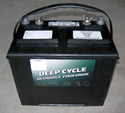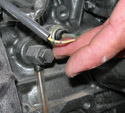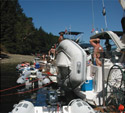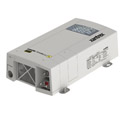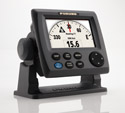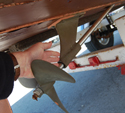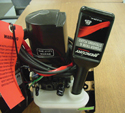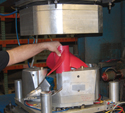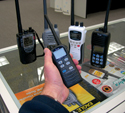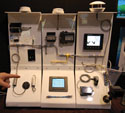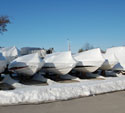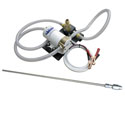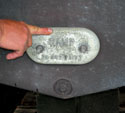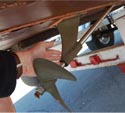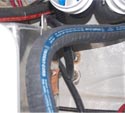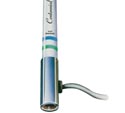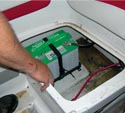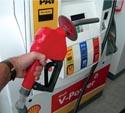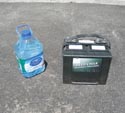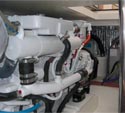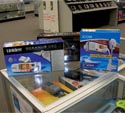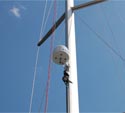December 24, 2010
One Watt: Each Watt Counts Because They All Add Up
When the last dock line is pulled onboard and you are floating free in the water, at that moment, the vessel that you are on is isolated from any of the support facilities that are so much a part of our everyday lives. You are on your own! If your planning has gone well and you have educated yourself on the systems onboard, you can look forward to an excellent and enjoyable boating experience.
December 22, 2010
Winterizing Tips for Your Diesel Engine
Just this past winter, my own transmission cooler, which should have been mounted in a more upright position, froze and split the casing, causing water to steadily leak into my bilge until we discovered the problem and corrected it. By “corrected” I mean dump money into replacing a perfectly good transmission cooler just because I thought it was fully drained when it wasn’t.
December 20, 2010
Tenderizing Your Tender – An Easy Way to Get Around!
I’ll never forget what a sad looking boat it was – a flaccid little inflatable with a wood floor, awash in perhaps 6 inches of slimy brown water that was slowly lapping into and out of the engine cover of the fairly new 9.9 Mercury outboard. The Merc’ had been left on its side on the floor. The dinghy was half under the pier and half in the rain, tied loosely at the back of the big boat’s slip, banging against the pilings 24 hours a day.
December 16, 2010
Smart Charger Upgrade For As Little As $500
Nobody wants a failure in high season. We interviewed Edward Saunders at Mastervolt about the new generation of smart chargers and he began by saying that electronics have a usable lifespan. Anyone with a 1995 or earlier cruisers may find their chargers are still working, but electrical components can fail; they fail suddenly and often without warning.
December 16, 2010
The Glass Helm Display
In the April 2010 issue of Canadian Yachting, we were starting to “frame up” the glass helm from the perspective of an older boat that deserves better navigation and ancillary equipment. Of course, the “glass helm” refers to the single screen onto which all the information can be displayed. Several companies now offer NMEA 2000-certified multifunction display systems and once the NMEA 2000 trunk line (or backbone) is installed in your boat, the next logical step is to buy your multifunction display screen.
November 2, 2010
Driveline Details Deliver Delightful Days
When was the last time you sent your propeller shaft to the machine shop to be checked? How old are your engine mounts? Have you replaced your cutlass bearing recently? Do I sound like your mother? Well, if she were here, she’d be giving you some important advice!
November 2, 2010
Big Box Botch-up or Why You Need OEM Marine Lubricants
Far too many people do this in the spring; drop into the nearest big box store and grab a season’s supply of universal, discount-priced 2-stroke oil, car oil for their 4-stroke outboard and inboard engines and maybe some all-purpose grease for their cables and steering gear.
October 28, 2010
Your propeller – The Unsung Hero of Boating
Doesn’t a propeller look simple? Visually, the size and shape makes it obvious that a propeller kind of “screws” its way through the water and to a casual observer, it looks to be one of the simplest parts on the whole boat.
October 28, 2010
Social Calls or a Lifeline – Why You Need a VHF Radio
Even if you never venture away from your favourite sheltered lake or river, a VHF radio is well worth the $200 investment for a basic radio and the ROC (M) Course and License to operate it. Here’s why.
June 25, 2010
Framing up the Glass Helm
With this issue of Canadian Yachting, we are starting to “frame up” the glass helm from the perspective of an older boat that deserves better navigation and ancillary equipment. A prime example would have been the older classic, twin-engine cruiser that our group restored recently. Well over 100 lbs. of fatigued old wire with corroded connections and chaffed insulation was carefully disconnected, removed and replaced.
June 24, 2010
Spring Launch Checklist Avoids Trouble Later
This Spring Launch Checklist is intended to be helpful for owners whose boats have been winterized and stored professionally. This Checklist is to help you launch the summer of 2010 with a boat that is in tip top shape and ready to deliver a season of trouble-free boating enjoyment. If possible, before the dealer takes your boat out of storage, go and inspect it visually for any sign of fluid leaks, damage by water intrusion or wildlife or missing or damaged pieces.
June 15, 2010
Oil Changes for Larger 4-Stroke Outboards
Those beautiful new 4-stroke outboards behind you are a wonderful power plant. Smooth and quiet, powerful and quick, they’ve come a long way from the “old smokies” that thumped along a few decades back. However, as the 4-stroke outboards have evolved, their maintenance has become something many owners feel may be too complicated, or just plain difficult to attempt. Most owners simply drop off the boat at the yard for a haul-out or call “the guy” when the scheduled oil change is due.
May 11, 2010
Avoid Breakdowns and Expenses
Create a Custom Checklist for Your Boat Almost every boat in Canada gets “winterized” in the fall and “summerized” in the spring. Here is an easy way to make sure it’s always done properly, to avoid breakdowns and expenses. We suggest that you invest in about two hours of time from the marine technician at your dealership and together, create a winterizing and summerizing checklist.
February 6, 2010
Webasto Dual Voltage Climate Control System
At IBEX, Webasto announced their dual-voltage A/C and reverse-cycle heating system that operates without a genset. Called the FCF-DV, the new system runs on standard 115-volt AC shore power and then automatically switches to 12-volt DC battery power while away from the dock. The noise and vibration from an onboard generator is eliminated, and the skipper can enjoy a night on the hook in peace and quiet while keeping his or her cool…
November 14, 2009
Protect Your Propeller Shaft
When was the last time you sent your propeller shaft to the machine shop to be checked? How old are your engine mounts? Have you replaced your cutlass bearing recently? Do I sound like your mother? Well, if she were here, she’d be giving you some important advice! Powerboats and sailboats with inboard engines generally have rubber in the engine mounts, packing material in the stuffing box and a cutlass bearing in the propeller strut.
November 14, 2009
Hose Maintenance
Does your boat have hardening of the arteries? Pardon the joke, but few people think in terms of vital arteries on board their boat. Of course, there are several. In some cases, a clogged artery can cause a fire. In others, a burst (or disconnected) artery can sink your ship in minutes.
November 14, 2009
Is Your VHF Antenna An Annual Replacement Item?
At least one marine electronics dealer we interviewed said your VHF antenna was an item that should be replaced annually. Ken Harrison at Summerhill.ca on the other hand, said that a good antenna should last 5 to 8 years (depending on whether or not it was used as a grab handle)!
November 14, 2009
Winterizing Your Boat
Almost every boat in Canada gets “winterized” in the fall and “summerized” in the spring. Here is an easy way to make sure it’s always done properly, to avoid breakdowns and expenses. We suggest that you invest in about two hours of time from the marine technician at your dealership and together, create a winterizing and summerizing checklist.
November 14, 2009
Coping with Ethanol Enhanced Fuel
In both California and now in Florida, class action suits have been launched against gasoline companies alleging that they knowingly sold gasoline to boaters containing ethanol and that the ethanol would attack and damage the fibreglass fuel tanks in older boats.
November 14, 2009
Is a Battery Left Over a Year Any Good?
I’ve never seen an official survey on this, but I’ll bet the primary reason people wind up poking around in their engine room is because they have battery problems. Especially with today’s new fuel injected engines; your battery only needs to crank the engine over a couple of turns and it starts right up, running happily with your alternator charging and all systems go.
November 14, 2009
Reducing Engine Noise
A quiet boat is a good boat. “Quiet” says well engineered, solidly built, comfortable to ride in…new. New boats are quiet. Old ones are noisy – power or sail. Why is that? In a recent technical presentation, we learned that the life expectancy of the sound absorbing materials in most new boats is about 10 years.
November 14, 2009
The VHF (Very High Frequency) Marine Radio
I often get asked how to best call for help if I have a problem when out on the water. Do I use my cell phone or should I have a VHF Marine Radio? The simple answer is that both may do the job depending on the circumstances but there are limitations. The cell phone has to be in range of a tower to forward the signal. A cell phone will contact only one person at a time and how often do you make a call only to get an answering machine or voice mail at the other end?
November 14, 2009
Installing a High-end Audio/Video System Onboard
My gawd! Don’t we all just love our music and video these days! A cruiser, power or sail boat from twenty years ago was not likely to have a TV onboard. Even a built-in sound system was not always a standard feature. But today, the new boats all come with a system; small boats get audio and bigger boats get audio and video systems. From the mid-30 foot range up, two flat screens are common and three or even four are not unheard of!

